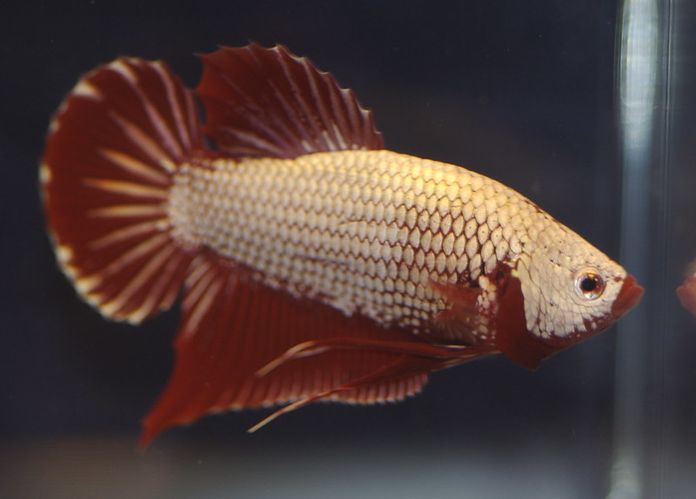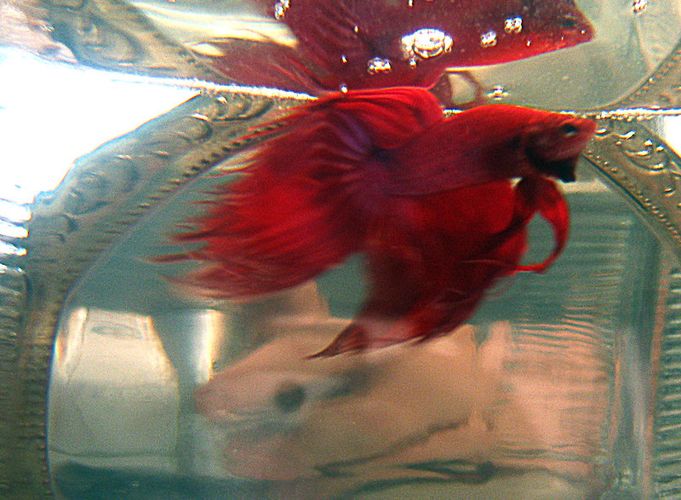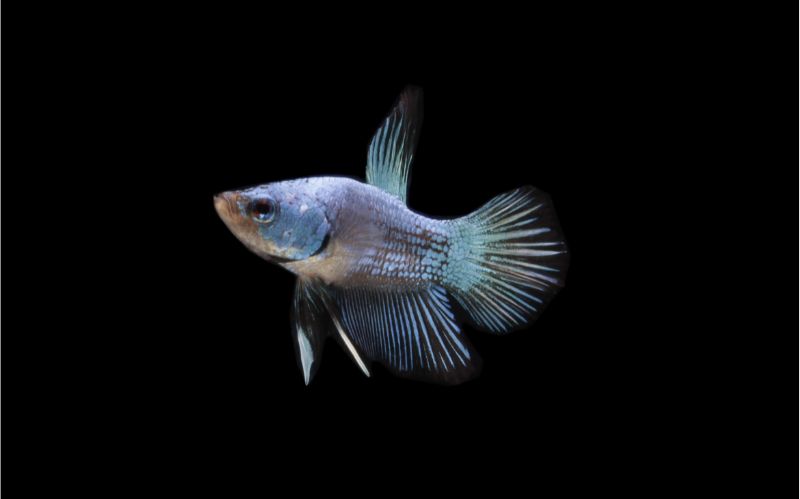Have you noticed that your betta has a white, cottony growth around its gills or fins? Is your fish acting lethargic, having trouble breathing, or having trouble eating?
The bad news is that you likely have a betta fish fungal infection. The good news is that fungal infections are treatable.
The primary causes of fungal infections are poor water quality, cold water, and a lack of oxygen. All these issues are easily correctable. So, your betta should be back to feeling good in no time.
What Is Fungus?

When you think of fungus, you probably think of mold, mushrooms, and yeast. Many people confuse fungi for plants, but they get their energy in a different way.
Plants photosynthesize to get their energy. Fungi get their energy by absorbing molecules that have broken down. They have specialized digestive enzymes that allow them to consume their food. The way that they gain their energy is what makes them dangerous for fish because they feed on their bodies.
Why Do I Have Fungus In My Fish Tank?
Fungal spores live in most aquariums, and they don’t usually cause a problem. They become a problem when your aquarium begins to break down. The spores become dangerous and cause infection in your fish.
Your Fish Is Sick
Harmful fungi begin to infect the tank through sick fish. Usually, as long as your fish are healthy, the fungi won’t bother them.
When a fish is sick, their immune system becomes weak, and they’re not able to fight off things that are harmful to them. Fungi take advantage of this. This is also why fungal infections tend to be secondary symptoms to a worse problem.
The most common reason your fish will become sick is because of poor aquarium conditions. Improper conditions leave their immune system unsupported. So, they become more susceptible to illness and disease.
So, the single best thing you can do to prevent a fungal infection is to keep your aquarium clean and healthy.
Your Fish Is Injured
Yet, injured fish are likely to develop fungal infections as well. Injuries lower their immune support. Open wounds also provide the perfect place for fungi to take hold. So, if your fish becomes injured, you should begin treatment right away.
You Introduced A Sick Fish To Your Aquarium
It’s also important to quarantine any new fish coming into your aquarium. There are thousands of different kinds of fungal infections. New fish coming into your home could have an infection and you might not know it. If you don’t quarantine your new fish before adding them to the main aquarium, they could infect the whole tank.
The main causes of fungus in the tank are dirty water, cold temperatures, and a lack of oxygen.
Your Tank Is Dirty
A dirty aquarium will have high levels of ammonia, nitrite, and nitrate. These are toxic to fish, especially at high levels. Your fish’s immune system becomes affected, and they are likely to become sick. This leaves them susceptible to a fungal infection.
Your Tank Is Too Cold
Likewise, cold temperatures will lower the immunity of tropical fish. If you’re housing tropical fish, you should have a heater and keep the water warm.
Your Tank Doesn’t Have Enough Oxygen
Also, fish need oxygen to breathe despite being water dwellers. If their water is stagnant, it can make them sick. Be sure to have a filter with good flow, or buy an airstone.
Is White Fungus Harmful To Fish?

Yes, white fungus is harmful to fish. It eats away at their flesh and can make it hard for them to swim and breathe.
What are the most common fish fungal infections to look out for?
Cotton-Wool Disease (Saprolegniasis or Achyla)
This is the most common fungal infection in fish. It mostly takes place in freshwater and brackish water aquariums. The infection occurs due to fungi in the genus Saprolegnia which is a water mold.
Luckily, it’s easy to spot. You will see white or gray fluffy patches on your fish’s fins and gins. The patches usually start small, often taking root in a cut on your fish’s skin. Yet, as the infection worsens, the fungus will spread.
These are usually secondary infections. They take hold after your fish has developed a primary infection, parasite, or injury.
Gill Rot (Branchiomycosis)
This type of infection occurs due to fungi in the genus Branchiomyces. These infections are much less common. It mostly infects carp and pike, so it’s rarely seen in the aquarium. Yet, it can occur in the aquarium, and it presents as rotting and decaying of the gills.
Ichthyosporidium
This infection is much more deadly because it starts on the inside. It generally targets a fish’s kidneys and liver. The infection will then spread throughout the body until it’s seen externally.
First, your fish will become lethargic and off-balance. Then, their bellies will become hollow, and they will develop sores on the outside of their body.
To treat this infection, you need to catch it before symptoms present externally.
Exophiala sp.
This infection also begins internally, attacking the kidneys, liver, and spleen. Round granulomas will develop on the organs, and one of their kidneys will enlarge. Fortunately, this infection is not common.
Egg Fungus
You need to be especially careful of fungal infections if you breed fish. The infection usually targets damaged, infertile, or diseased eggs. But, it will spread to healthy eggs.
Eggs can develop white patches of fungus, like adult fish. This is much less treatable and has a higher death rate than in adults.
What Kills Fungus In A Fish Tank?

These infections probably sound terrifying as a fish keeper. But, the most common infection is cotton mouth, and it’s completely treatable.
Once one fish becomes infected, the infection can spread to other fish, even if they’re healthy. So, the first thing you should do is quarantine your fish with the infection.
Aquarium Salt
You should add aquarium salt to the quarantine tank. Aquarium salt is great for wound healing and can treat fungal infections. If you’ve caught the infection quickly, aquarium salt might be able to kill the infection on its own.
Anti-Fungal Medication
If not, you’ll need to use antifungal medication. Many of these medications contain antibiotics as well. Most fungal infections are secondary diseases, so this may be a good way to take care of the primary problem.
Usually, it’s not necessary to treat the entire tank unless all your fish become infected. If only one fish is sick, it’s better to quarantine and treat it in the hospital tank.
Consider trying Maracyn, ParaGuard, or SulfaPlex.
How Long Does It Take For A Fish To Recover From Fungus?
Fungal infections are generally secondary infections caused by a bigger problem. So, how long it takes your fish to get better depends on what is plaguing it.
Parasitic infections may take several weeks to over a month to heal. Bacterial infections usually clear up in a week or two.
It also depends on how sick your fish was before you caught the infection. If you caught the infection early, they will likely heal much quicker.
Conclusion
Fungal infections can look scary, and they can be irritating for your betta. It mostly grows on the gills and fins. So, it can make it hard for your fish to swim and even breathe.
Thankfully, it’s easy to prevent and treat fungal infections. Keeping your tank clean is your main priority. You also want to ensure that your tank is at the proper temperature and that you have airflow. If your betta does develop an infection, get them started on a good fungal medication.

